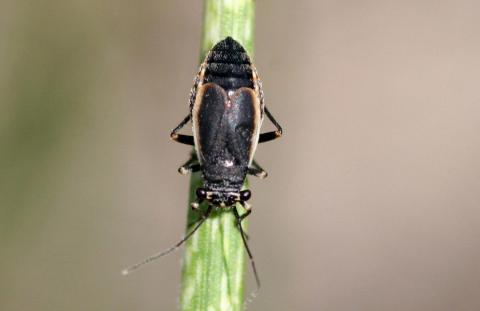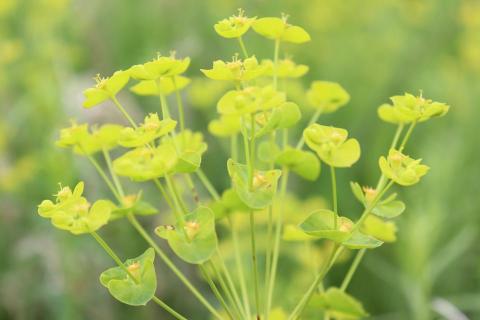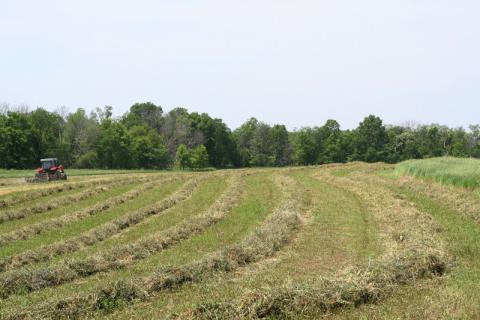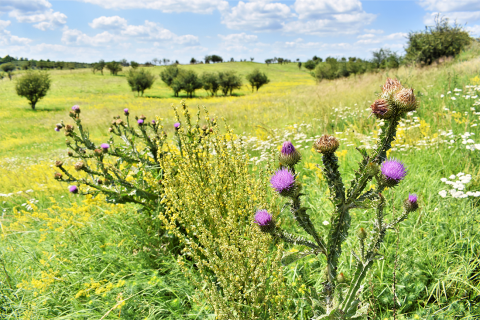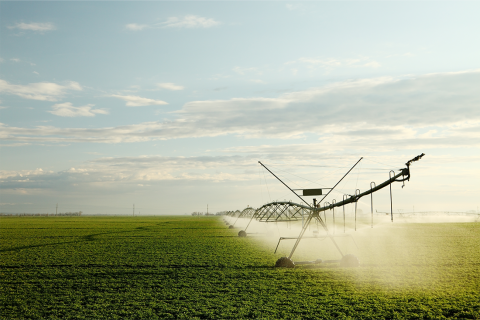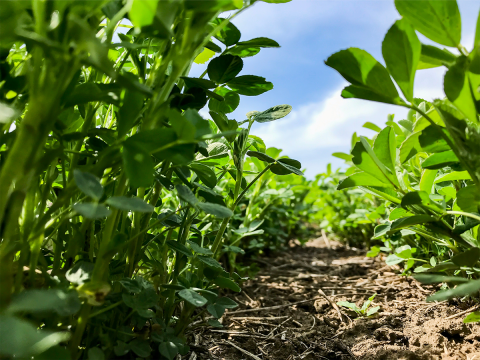Pasture and Forage Minute: Low Hay Stocks, Grazing Shifts, Toxic Pasture Plants
June 13, 2023
With the lowest level of hay stocks since 1974, extension educators stress the importance of taking inventory of feed and hay resources, and to begin planning for next year's needs right now.
Pasture and Forage Minute: Irrigating First Cutting Alfalfa, Black Grass Bugs and Short Pastures
June 9, 2023
This week — irrigation strategies for moisture-stressed alfalfa prior to first cutting, controlling black grass bugs in wheatgrass, and techniques for stretching pasture.
Pasture and Forage Minute: Controlling Alfalfa Weevil and Leafy Spurge, First Cutting Alfalfa
June 1, 2023
With first cutting alfalfa to begin soon, extension educators discuss the importance of scouting for alfalfa weevils to mitigate yield losses and strategies for timing harvest, plus control options for leafy spurge.
Pasture and Forage Minute: Small Grains and Grass Harvest, Fencing Costs
May 23, 2023
This week — Nebraska Extension educators share target protein levels of small grains and grass hay for the upcoming harvest, and analyze the cost of various fencing options.
Pasture and Forage Minute: Wheat Grazing vs. Grain Value, Choosing Summer Forage
May 16, 2023
This week — Recommendations for producers considering wheat for forage, including varieties and planting timelines for summer annual grasses, plus tips on control measures for poison hemlock.
Pasture and Forage Minute: Equipment Maintenance, Controlling Musk Thistle and No-Till on the Plains Tours
May 11, 2023
This week, extension educators review a checklist for pre-season hay equipment maintenance, tips for controlling musk thistle in pastures, and details of this year's No-Till on the Plains Whirlwind tours in June.
Pasture and Forage Minute: Early Season Alfalfa Irrigation, Trigger Dates and Weed Control
April 19, 2023
This week — Strategies for irrigating alfalfa in early season dry soil conditions, grazing to control abundant weed growth due to drought and forming a drought plan.
Pasture and Forage Minute: Alfalfa Weed and Stand Management, Grazing Winter Annuals
April 10, 2023
This week — Tips on controlling winter annual weeds for optimum first cutting hay quality, evaluating alfalfa stands with a hay square, and grazing rye, winter wheat and triticale during a cool start to spring.


